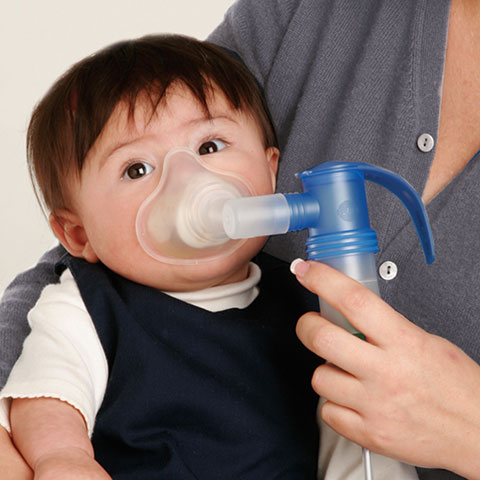
Pediatricians often opt for nebulizer therapy as the first-line treatment for acute and chronic respiratory disease in young children. Nebulizer therapy is a proven method for treating respiratory diseases.
On average, children are infected with two to eight upper respiratory infections (URI) each year in the first 2 years after birth, and those who attend day care may have as many as 14 annually. In most cases these infections are caused by more or less harmless viruses. Bronchitis, asthma, and cystic fibrosis, i.e. chronic respiratory diseases, present additional challenges to pediatricians and parents. To treat these diseases, PARI nebulizers are commonly used to deliver aerosol medications. Inhalation therapy with a nebulizer is sometimes the only way to deliver medications deep into the tiny airways of babies and toddlers.
Children are active and often want to help. Get your child involved in their nebulizer treatments! For example, if your child is old enough they may be able to add the inhalation solution to the nebulizer cup (please never leave your child unsupervised when doing this) or turn the machine on. It may also be helpful to have their favorite stuffed animal go first and show how to use the nebulizer. Show your child how the aerosol flows out of the mask or mouthpiece like a mist and then explain the next step: "Now it's your turn to inhale." It is important for your child to understand why aerosol therapy is necessary and for them to have a positive experience. It sometimes takes practice, so if things don't go well the first time, it is best to shorten the nebulization therapy and try again at a later time.
Make sure that older children are in a relaxed sitting position during nebulizer therapy. Sitting upright or even standing is better than lying curled up on the couch. Why? This is the best way the aerosol can get deep into airways, where it is needed. An example of a good distraction so the child’s breathing will remain steady and calm during nebulizer therapy is to look through a picture book together. For a baby, it is helpful if you are holding him or her during a nebulizer treatment, making sure they are a little sleepy and not hungry at the time. In any case, regardless of the option you choose, you should make sure the environment is as stress-free as possible when using the nebulizer. This makes even frequent nebulizer therapy a little easier every time they are used – for parents, too.

The contents of the PARI Site, such as text, graphics, images, and other material contained on the PARI Site ("Content") are for informational purposes only. The Content is not intended to be a substitute for professional medical advice, diagnosis, or treatment. Always seek the advice of your physician or other qualified health provider with any questions you may have regarding a medical condition. Never disregard professional medical advice or delay in seeking it because of something you have read on the PARI Site!
If you think you may have a medical emergency, call your doctor or 911 immediately. PARI does not recommend or endorse any specific tests, physicians, procedures, opinions, or other information that may be mentioned on the Site. Reliance on any information provided by PARI, PARI employees, others appearing on the Site at the invitation of PARI, or other visitors to the Site is solely at your own risk.
Contact us
Any questions? You can reach a customer service representative at:
804-253-7274
or 1-800-FAST-NEB (327-8632)
If you are looking to buy PARI products in a specific country, please click here
© 2025 PARI Respiratory Equipment, Inc.